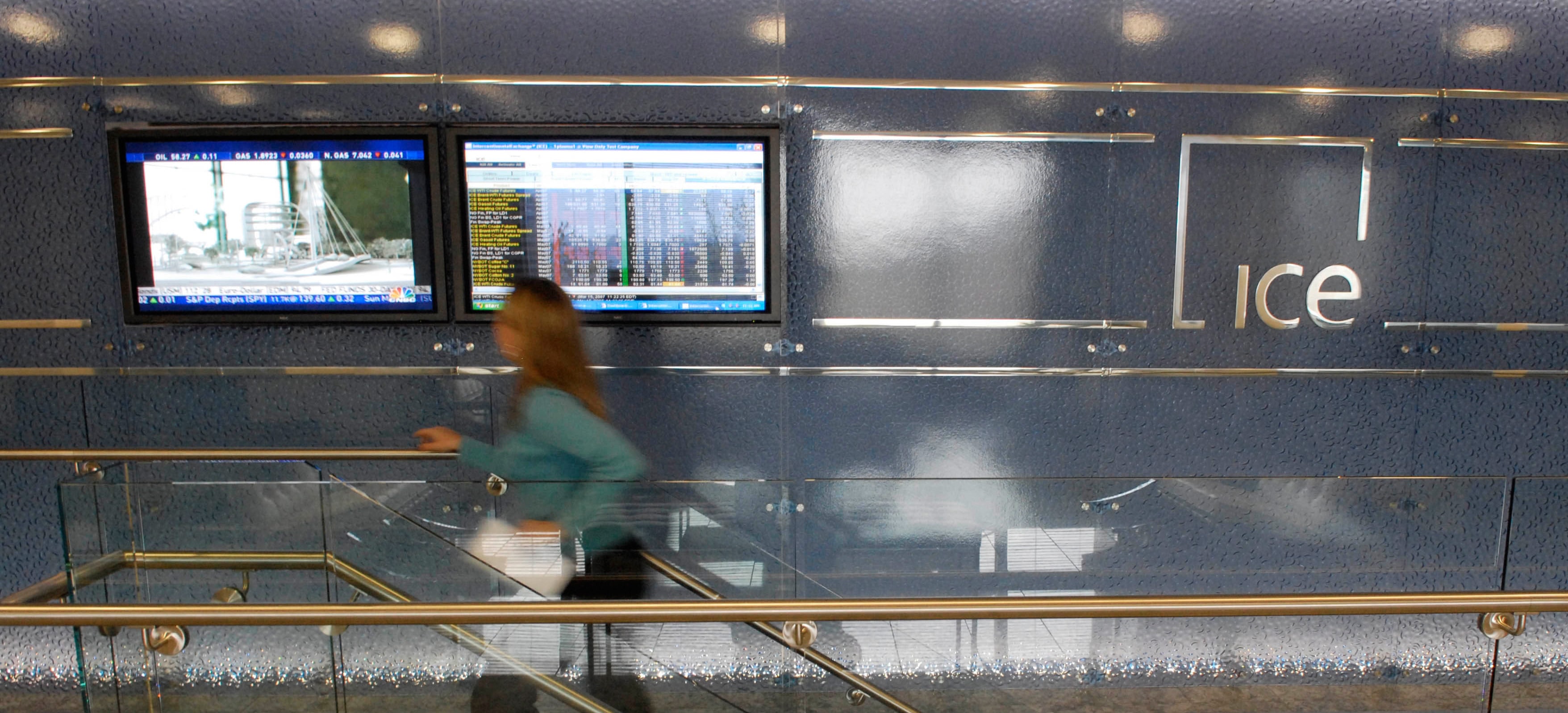Intercontinental Exchange (NYSE:ICE), a global network of exchanges and clearing houses, has reported its latest aggregated volumes for the month ending February 2017, which were characterized by mixed results across both the monthly and yearly intervals, according to an ICE statement.
Despite the absence of any specific market drivers or an uptick in Volatility last month, as reflected by downbeat volumes reported across major ECNs, ICE’s overall performance was broadly flat in February across most business segments.
During the reported month, ICE’s February average daily volume (ADV) for futures and options business was reported at 5.8 million contracts per day, which corresponded to a growth of 3.5 percent MoM from 5.6 million per day in January 2017. However, this latest figure marks a -4.8 loss over February’s 2016 which came at 6.09 million contracts per day.
For the month ending February 2017, ICE saw its energy volume average 2.97 million contracts per day, which represents a jump of 3.6 percent month-on-month compared with 2.87 million contracts in January 2017. Across a yearly interval, the latest figure also reported a 3.0 advance from 2.88 million contracts per day in February 2016.
In terms of ICE’s total commodities volume, the figure was upbeat in its overall performance, managing to average 3.46 million contracts per day in February 2017, which was good for a month-on-month advance of 6.9 percent vs. 3.23 million in the month prior. The group’s commodities activity was also higher by 1.5 percent year-on-year when weighed against 3.4 million contracts reported back in February 2016.
Meanwhile, ICE disclosed mixed metrics across its foreign exchange and credit volumes, which averaged 40,000 contracts per day. The figure reversed the narrative, because while the firm posted a 21.0 percent increase year-on-year from just 33,000 contracts a year ago, the exchange registered a -16.7 percent drop when compared to 48,000 contracts in January 2017.
Finally, the overall financial results, which also include interest rates and equity indices, orchestrated a decline of -12.8 percent year-on-year after revealing only 2.34 million contracts per day compared to 2.69 million in February 2016.
Intercontinental Exchange (NYSE:ICE), a global network of exchanges and clearing houses, has reported its latest aggregated volumes for the month ending February 2017, which were characterized by mixed results across both the monthly and yearly intervals, according to an ICE statement.
Despite the absence of any specific market drivers or an uptick in Volatility last month, as reflected by downbeat volumes reported across major ECNs, ICE’s overall performance was broadly flat in February across most business segments.
During the reported month, ICE’s February average daily volume (ADV) for futures and options business was reported at 5.8 million contracts per day, which corresponded to a growth of 3.5 percent MoM from 5.6 million per day in January 2017. However, this latest figure marks a -4.8 loss over February’s 2016 which came at 6.09 million contracts per day.
For the month ending February 2017, ICE saw its energy volume average 2.97 million contracts per day, which represents a jump of 3.6 percent month-on-month compared with 2.87 million contracts in January 2017. Across a yearly interval, the latest figure also reported a 3.0 advance from 2.88 million contracts per day in February 2016.
In terms of ICE’s total commodities volume, the figure was upbeat in its overall performance, managing to average 3.46 million contracts per day in February 2017, which was good for a month-on-month advance of 6.9 percent vs. 3.23 million in the month prior. The group’s commodities activity was also higher by 1.5 percent year-on-year when weighed against 3.4 million contracts reported back in February 2016.
Meanwhile, ICE disclosed mixed metrics across its foreign exchange and credit volumes, which averaged 40,000 contracts per day. The figure reversed the narrative, because while the firm posted a 21.0 percent increase year-on-year from just 33,000 contracts a year ago, the exchange registered a -16.7 percent drop when compared to 48,000 contracts in January 2017.
Finally, the overall financial results, which also include interest rates and equity indices, orchestrated a decline of -12.8 percent year-on-year after revealing only 2.34 million contracts per day compared to 2.69 million in February 2016.
















